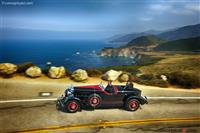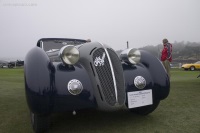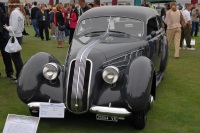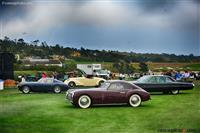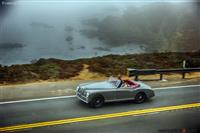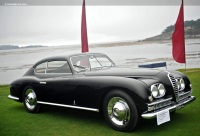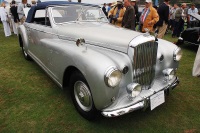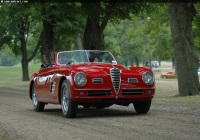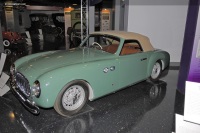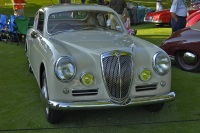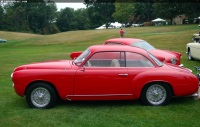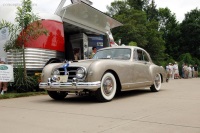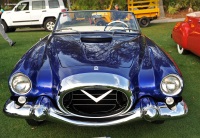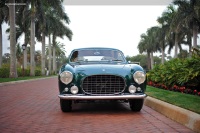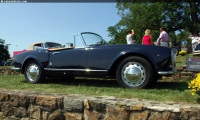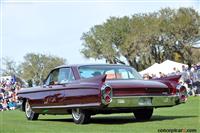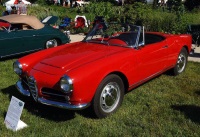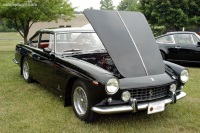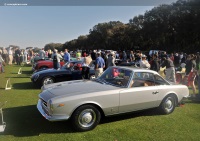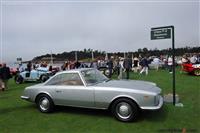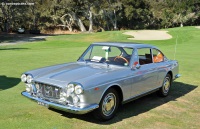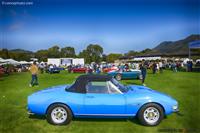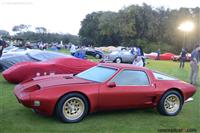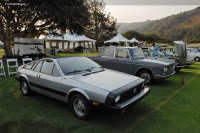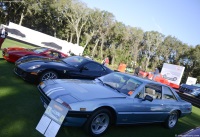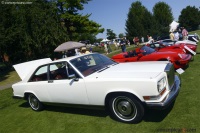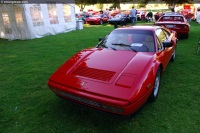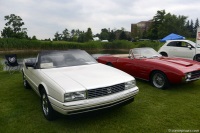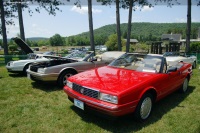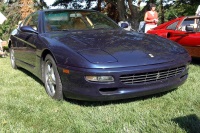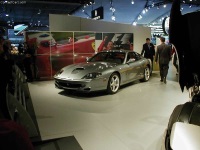Coachwork by Pininfarina
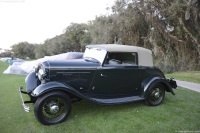
Chassis number: 18-81392
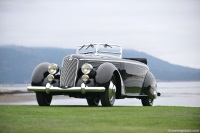
Chassis number: 33-3277
Engine number: 41208

Chassis number: 814047
Engine number: 823106

Chassis number: 412012
Engine number: 422008
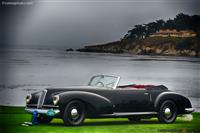
Chassis number: 41-3055
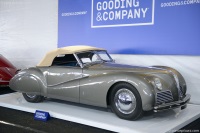
Chassis number: 915026
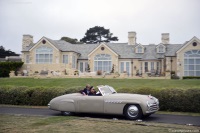
Chassis number: 915169
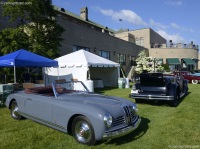
Chassis number: 439-11844
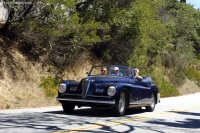
Chassis number: 915325
Engine number: S926139
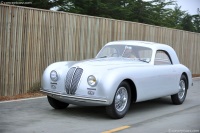
Chassis number: 800697

Chassis number: 439-11854
Engine number: 24292

Chassis number: B466DA
Engine number: B233D
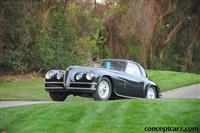
Chassis number: 915.758
Engine number: 928064 or 928.198

Chassis number: 0126
Engine number: 049

Chassis number: 1010
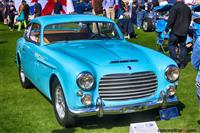
Chassis number: AM2020
Engine number: 2020
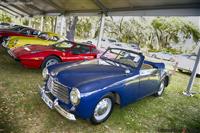
Chassis number: 898621

Chassis number: 8332MD
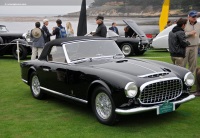
Chassis number: 0177E

Chassis number: 0248AL

Chassis number: 2241
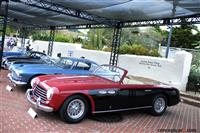
Chassis number: 208SL 1006613
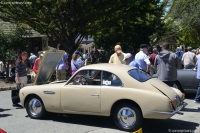
Chassis number: 303 FN 00127
Engine number: 127
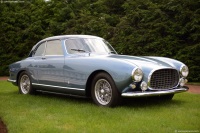
Chassis number: 0263 EU
Engine number: 0263 EU
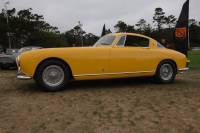
Chassis number: 0341EU
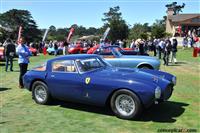
Chassis number: 0344MM
Engine number: 0344 MM
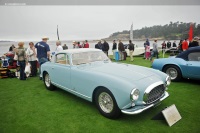
Chassis number: 0293 AL
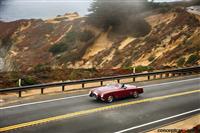
Chassis number: B52-1052
Engine number: B21-4843
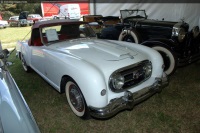
Chassis number: 12486
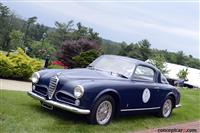
Chassis number: AR1900C.01647
Engine number: AR1308.00648
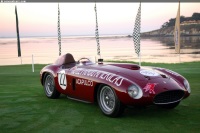
Chassis number: 0442 M
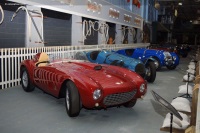
Chassis number: 0412AM

Chassis number: 0472AM
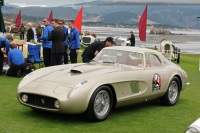
Chassis number: 0456AM

Chassis number: 0452MD

Chassis number: 675360
Engine number: F2735-8S
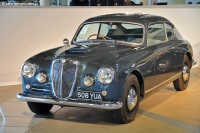
Chassis number: 3126

Chassis number: 0407GT
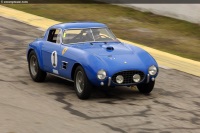
Chassis number: 0383GT
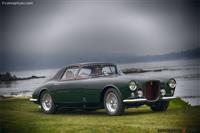
Chassis number: 0355AL
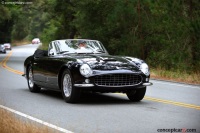
Chassis number: 0488AM
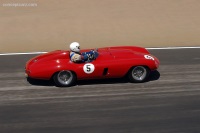
Chassis number: 047MD
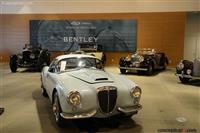
Chassis number: B24S-1044
Engine number: B24-1052

Chassis number: 188 010 55 00016
Engine number: 188 920 55 00020
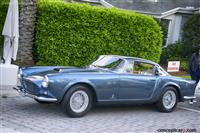
Chassis number: 0465 GT

Chassis number: 0479SA
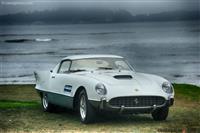
Chassis number: 0483SA
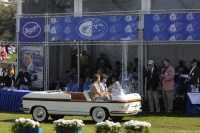
Chassis number: 100.108.008009

Chassis number: B-24 51236
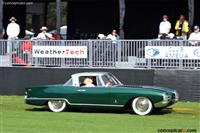
Chassis number: D-12575
Engine number: F-13206
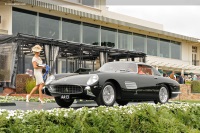
Chassis number: 0725GT

Chassis number: 0715 SA
Engine number: 0715 SA
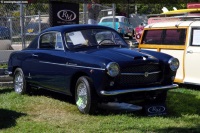
Chassis number: 103TV098941
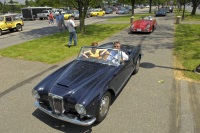
Chassis number: B24S-1317
Engine number: B24 1435
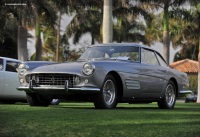
Chassis number: 1187 GT
Engine number: 1187
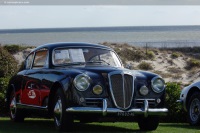
Chassis number: B20S1801
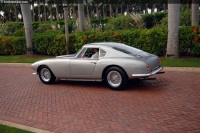
Chassis number: 1521GT
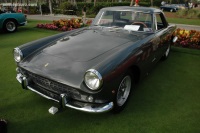
Chassis number: 1977 GT

Chassis number: 2373 SA
Engine number: 2373 SA
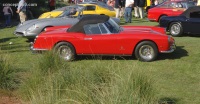
Chassis number: 1885 SA
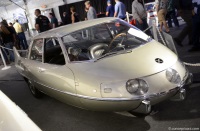
Chassis number: 29404
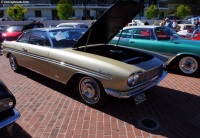
Chassis number: 6929061100
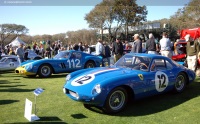
Chassis number: 2643 GT

Chassis number: 2841SA
Engine number: 2841SA
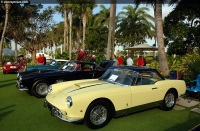
Chassis number: 2407SA
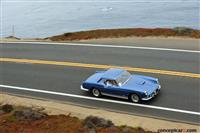
Chassis number: 2331

Chassis number: 118S 006560
Engine number: 118.000 002763

Chassis number: 3615
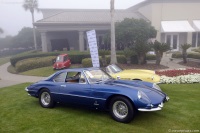
Chassis number: 3949 SA
Engine number: 163
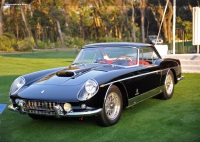
Chassis number: 3309 SA

Chassis number: 823024290
Engine number: 5874
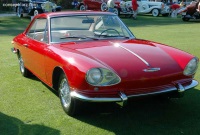
Chassis number: 00727W208072

Chassis number: 30837S103720
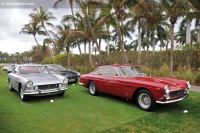
Chassis number: 4151GT
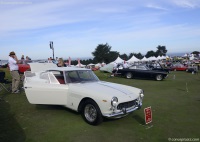
Chassis number: 4247 GT
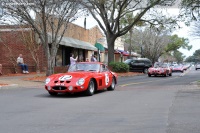
Chassis number: 4725 SA
Engine number: 4725

Chassis number: 28177
Engine number: 171772

Chassis number: 815.330.007775
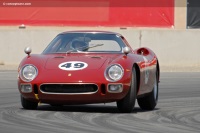
Chassis number: LM 6045
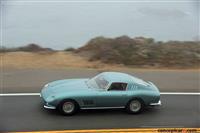
Chassis number: 06437
Engine number: 06437

Chassis number: 330GT6971
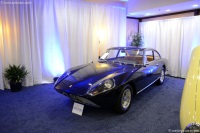
Chassis number: 6537
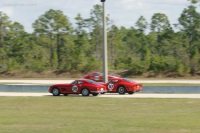
Chassis number: 8457
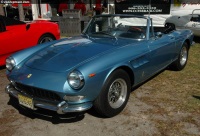
Chassis number: 07745

Chassis number: 8025
Engine number: 8025

Chassis number: 8753

Chassis number: 8971
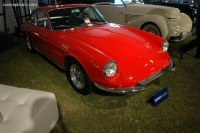
Chassis number: 9857

Chassis number: 9653
Engine number: 9653

Chassis number: 9849
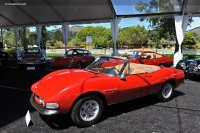
Chassis number: 135AS0000698
Engine number: 135B0000002655

Chassis number: CBH4033

Chassis number: 11517
Engine number: 11517

Chassis number: 10189
Engine number: 10189

Chassis number: 12529
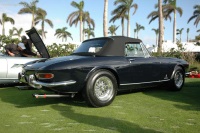
Chassis number: 12489

Chassis number: 135BS.0001181
Engine number: 135C.0000005200

Chassis number: 100981-12-004017
Engine number: 109018-12-003924
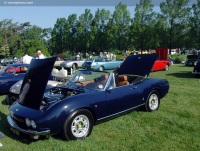
Chassis number: 135 BS 000 1344
Engine number: 0008374
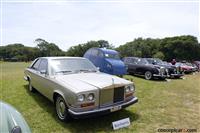
Chassis number: JRL50745
Engine number: 50745

Chassis number: JRL50419
Engine number: 50419

Chassis number: 79888

Chassis number: 1G6VR3188KU101139

Chassis number: 1G6VS3397PU127328
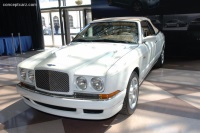
Chassis number: CX 62043

Chassis number: SCBZK22E51CX62555

Chassis number: ZFFZR52A610124373
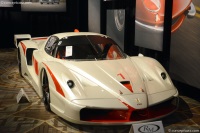
Chassis number: ZFFHX62X000145369
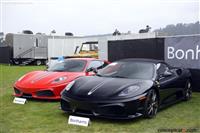
Chassis number: ZFFKW66A490166787

Chassis number: ZFF75VFA9E0205936

Chassis number: ZFF74UFAXF0208584

Chassis number: ZFF74UFA5H0226588
The Company was founded by Pinin Farina in 1930 and until the Fourties it concentrated on the design and craftsman construction of special car bodies, with innovative styling and technical features for individual customers or in a small production runs. Those were the years of the Alfa Romeo 8 and 6 cylinders, the Hispano Suiza Coupé, the Lancia Dilambda and Astura, the Fiat Ardita and the revolutionary aerodynamic Lancia Aprilia Coupé.
After the difficult war years, 1947 was the year of the Cisitalia, the first car to be on permanent display in a modern art museum, the MOMA in New York.
In the early Fifties, Pininfarina gave expression to a strong international vocation ahead of its time, cooperating in design and manufacture with the American car maker Nash, and entering into a cooperation agreement with Peugeot that was destined to strengthen over the years to the present day; 1952 also marked the start of cooperation with Ferrari, whose continuity has been extremely important in technical, stylistic and image terms.
In the second half of the Fifties Pininfarina began high run production (27,000 Alfa Romeo Giulietta Spiders) for industrial customers, and transferred its headquarters from Turin to Grugliasco, under the guidance of the Founder's son Sergio Pininfarina and son in low Renzo Carli. Manufacturing structures were strengthened, and the cooperation agreements with various car makers (Peugeot, Fiat, Lancia, Alfa Romeo and Ferrari) were consolidate in the Sixties as the Company acquired an industrial dimension.
This period saw the birth among others of the great Ferrari Berlinettas, the Florida prototypes and the Lancia Flaminia, the Austin A40, the Morris 1100, safety research vehicles, the Alfa Romeo Duetto, the Fiat 124 Spieder, the Peugeot 404 and 504, the Dino Fiat and the Dino Ferrari.
Reorganisation and diversification.
In 1966, after the Founder death, Sergio Pininfarina became Chairman and continued the organisational and technological renewal of the Company: the Experimental Department, responsible for Pininfarina styling activities, developed further and the Studies and Research Centre was created. The concept cars of those years underlined the vivacity and innovation of the Pininfarina creative team: the Dino Berlinetta Speciale, the Ferrari 365 P, P5, 512S, Modulo and CR25, the BMC 1800 and 1100 Berlinettas, the Alfa Romeo P33 and Alfetta and the Jaguar XJs.
The Calculation and Design Centre was set up in 1967, the first step in a process of technological evolution which, during the Seventies, would take Pininfarina into the lead in automated bodywork design. The construction of a full size Wind Tunnel for aerodynamic research in 1972 was the first in Italy and one of only a few in the world at the time. It represented a far-sighted, courageous investment in a period of social and economic crisis all over the world.
The vehicles that appeared in those years included the Ferrari Daytona, Berlinetta boxer and 308, 365 GT/4 and its later evolutions, the 400 and 412, the Fiat 130 Coupé, the Lancia Beta Montecarlo and the Lancia Gamma Saloon and Coupé.
The evolution of Pininfarina, by sectors of activity, led to the creation in 1979 of an Industrial Group held by a Holding Company, Pininfarina S.p.A., responsible for coordinating the financial activities and image of the various subsidiaries: the largest operating Company, Industrie Pininfarina S.p.A., has been working in the field of engineering, industrialization and production, and in 1981 also began to assemble mechanical parts on the body, as well as complete vehicles (complete mechanicals of the Fiat Campagnola, and then of the Spider Europa and Alfa Romeo 33 Station Wagon).
In 1981, the Studies and Research Centre became Pininfarina Studi e Ricerche S.p.A., with an indipendent operating structure and a fast growing number of customers.
They included the CNR (the Italian National Research Council), with which the Company has been cooperating closely since 1978 on specific transport and energy saving projects, and the Honda Company of Japan, with which a creative cooperation agreement has been in existence since the Seventies.
The Company operates in the traditional field of automotive design, but also in the wider field of means of transport, with particular emphasis on diversification in the nautical and public transport fields.
From stock exchange listing to technological renewal.
In 1986, Pininfarina S.p.A. entered the financial markets by way of a Stock Exchange quotation, and Pininfarina Extra s.r.l. was created, an affilated Company dedicated specifically to product design.
Pininfarina undertook a number of important investments (a new manufacturing plant in San Giorgio Canavese, new process and product technologies), and production of the Ferrari Testarossa (later the 512 TR), the Alfa Romeo Spider, the Lancia Thema Station Wagon and the Peugeot 205 Cabriolet was joined by that of the Cadillac Allanté.
At the same time the design and engineering sector expanded and diversified, and the production of significant styling prototypes and technical and scientific research continued.
In the Eighties the Ferrari Pinin, the Audi Quartz, the Honda HPX, the Peugeot Griffe, the Alfa Romeo Vivace Coupé and Spider, the Lancia Hit and the Ferrari Mythos were all presented at International Motor Shows.
The Company continued to provide styling consultancy services to noumerous manufacturers, for the Peugeot 205 Saloon and Cabriolet, 405 and 106, the Alfa Romeo 164, the Ferrari GTO, Testarossa, F40, 348 TB and TS.
Pininfarina Deutschland Gmbh was set up in 1991, to operate in the German market in the field of car engineering, tooling and model making.
New research prototypes were developed in the Nineties, many of them directed at tackling energy and environmental problems: the CNR E2, GM Chronos, the Ethos of 1992, the Ethos 2 of 1993, the Ethos 3 of 1994 and the Ethos 3 EV of 1995, Honda Argento Vivo of 1995, Fiat Sing and Song and CNR Eta Beta of 1996, Peugeot Nautilus of 1997, Alfa Romeo Dardo of 1998, Wish and Metrocubo of 1999.
Designed activities in cooperation with manufacturers produced the Ferrari 512 TR, 456 GT 2+2, the Peugeot 306 Cabriolet, the Ferrari F355 Berlinetta, F355 Spider and F50, the Alfa Romeo Spider and GTV, the Ferrari 550 Maranello and 456M , the Peugeot 406 Coupé and Saloon and the Ferrari 360 Modena.
Between 1992 and 1994 the range manufactured by Pininfarina was completely renewed with four new models: the Ferrari 456 GT, the Coupé Fiat, the Peugeot 306 Cabriolet and the Bentley Azure. Production of the Lancia k Station Wagon was added in 1996.
In the 1997 an industrial agreement was announced with the Mitsubishi Motors Corporation for the production, in the new Pininfarina plant in Bairo Canavese, Italy, of about 30,000 units a year of the Pajero Pinin, the new Sport Utility Vehicle for the Japanese Company destined to the European market, joining in 1999 Pininfarina's production range, which also includes: the Bentley Azure, the Coupé Fiat, the Lancia k Station Wagon, the Peugeot 306 Cabriolet and 406 Coupé.
In an increasingly competitive world market, Pininfarina has equipped itself with the structures, dimensions and capabilities required for an efficient and flexible response to the market's new challenges. Today the Group can offer its motor manufacturing clients a comprehensive service that covers the design development and manufacture of complete cars or car components, as its customers may require. Pininfarina confirms that it is a competitive industrial company with a proven capacity for growth while retaining and indeed building on its traditions, its product culture and its commitment to quality in design technology and construction.
In 2000, at the 70th Geneva International Motor Show, Pininfarina displayed four world debuts: Ferrari 360 Spider, Daewoo Tacuma, Coupé Fiat Special Interpretation (expressly conceived for such a significant market as the German one) and Peugeot 406 Coupé 'Pininfarina settant'anni', a special creative interpretation designed to celebrate Pininfarina's 70th birthday that went into production in a numbered limited edition during that year.
Still in 2000, at the Turin Motor Show, Pininfarina's 70 years in the business were furthermore celebrated by two important events: the world preview of the 'rossa' research prototype, a two-seater spider on Ferrari 550 Maranello mechanicals, and an international forum 'On the Roads of the Future'.
At the Paris International Motor Show 2000, the 550 Barchetta, to which Ferrari has given the name Pininfarina for the first time on the occasion of the Company's 70th anniversary, was presented at the Mondial de L'Automobile 2000 in Paris.
In September, three new models went into production: Mitsubishi Pajero Pinin 5 door, Alfa Romeo Spider and GTV.
2001 to the present - Today, the services company.
Pininfarina is currently involved in a huge and demanding modernisation project. It is developing new skills in the attempt to reposition the Company in an ever more competitive market. Today, the Company is extending its range from its traditional design/manufacturing business where Pininfarina has always excelled into the world of design engineering and development.
The aim is to create a flexible services Company able to operate in every sector of the automotive industry.
In January 2001 made its debut the Hyundai Matrix, a two-box sedan designed by Pininfarina.
In 2001 Pininfarina presented two new concepts: the Osée, based on Citroën mechanicals, that was voted the 'Best Concept' among the Editors' Choice Awards assigned by the prestigious American magazine AutoWeek, and the Start, realised on Ford mechanicals and technology, in homage to the new collaboration with Ford Europe GmbH, based on which Pininfarina cures, in 2001 and 2002, the engineering of the Ford StreetKa for its successive production in the own plants to leave from 2003.
Still in 2001 Pininfarina S.p.A. increased its interest in Pininfarina Extra S.r.l. from 20% to full control, thereby achieving a complete organisational and operating integration of the industrial design activities for all market segments wih the exception of means of transport.
In parallel, in order to emphasise the new strategy of the Pininfarina Group that widens the services offered to the OEMs from the field of style and niche production to the world of engineering, becoming therefore one of the few full service partner on the market, in January 2002 Pininfarina Studi e Ricerche S.p.A. changed its own corporate name into Pininfarina Ricerca e Sviluppo S.p.A.
And more: consistent with the new strategy of acting on the market as a Full Service Provider, on January 10 2002 Pininfarina and Webasto announced the founding of Open Air Systems GmbH, a 50-50 joint-venture set up between the 2 Companies to design, engineer and produce retractable roof systems.
In 2002 the Ferrari 575M Maranello, the front-engined berlinetta with superlative technical and performance content, made its debut and the Founder Battista 'Pinin' Farina entered the European Automotive Hall of Fame, an institution established last year by the prestigious motoring magazine Automotive News Europe in order to honour the men who have made automobile history.
The styling/engineering cooperation with the Chinese Company Hafei, started in 1996 (styling, design and engineering of the Zhongyi minivan) and become more and more important in 2001 with the signing of a second and third contract (for styling and engineering of the Lobo city car and for styling, design, prototyping and testing of yet another new vehicle with European homologation standard), was celebrated by the exhibition at the 2002 Beijing Motor Show of a concept, the HF Fantasy, a sporting and top class saloon which reinterprets and develops some strong themes from the Lobo to
achieve a Hafei brand identity.
2002 also signed the debut of a new extraordinary Ferrari, the Enzo, a limited edition supercar which, in line with the previous F40 and F50, expressed the supreme transfer of technology from F1 to Ferrari GT road cars.
Still in 2002 Pininfarina, which has turned out an average of about 30,000 units a year in the last ten years, began production of the Ford StreetKa, also taking responsibility for product and process engineering. The 2002 production range also includes the Alfa Romeo GTV and Spider, the Mitsubishi Pajero Pinin 3 and 5-door and the Peugeot 406 Coupé.
On October 14 2002 Pininfarina inaugurated the new Engineering Centre. It stands in 12,000 sq.m. over 6,000 sq.m. of which is built on, and enhances Pininfarina capabilities, enabling the Company to offer engineering services on the market alongside its traditional styling and design skills. From 2002, a total of 500 leading Pininfarina specialists are dedicated to automotive design, engineering and industrialisation, a fundamental part of the development of a new product, between the creative stage and the manufacturing one.
On November 2002, to confirm the growth of Pininfarina's engineering operations, a Memorandum of Understanding was signed with Volvo Car Corporation to develop a new car for the Swedish carmaker. Starting from the Volvo Cars' styling definition, Pininfarina is responsible for the entire project and it supplies all product and process engineering, prototyping and testing services.
The new four-door GM - Daewoo Nubira saloon, designed by Pininfarina, made its debut at the Seoul Motor Show 2002, enhancing the cooperation with the Korean manufacturer started with the styling of the compact MPV Tacuma in 2000.
On March 2003, at the Geneva International Motor Show, Pininfarina presented the 'Enjoy' concept car. This small roadster, built on a Lotus powertrain, can be configured for use both on the racetrack and on the road. AutoWeek, a prestigious U.S. magazine, named the Enjoy Most Fun Car. Still in Geneva made its world debut the new Alfa Romeo Spider and GTV designed and built by Pininfarina in its plants.
In August 2003 Pininfarina S.p.A. closed agreement, with Lagardère SCA group, on purchase of Matra Automobile's engineering, testing and prototyping businesses.
At the 60th Frankfurt International Motor Show the Maserati Quattroporte, designed by Pininfarina, made its world debut. This car will mark the return of an Italian brand to the exclusive universe of luxury saloon models.
In September 2003 Pininfarina S.p.A. and Volvo Car Corporation formed a joint venture (60% Pininfarina, 40% Volvo Car Corporation) with the aim to develop and manufacture Volvo's next generation convertible. The new company, Pininfarina Sverige AB, will be responsible for all operations at the Uddevalla plant, including project management, process engineering, prototyping and testing services.
After the difficult war years, 1947 was the year of the Cisitalia, the first car to be on permanent display in a modern art museum, the MOMA in New York.
In the early Fifties, Pininfarina gave expression to a strong international vocation ahead of its time, cooperating in design and manufacture with the American car maker Nash, and entering into a cooperation agreement with Peugeot that was destined to strengthen over the years to the present day; 1952 also marked the start of cooperation with Ferrari, whose continuity has been extremely important in technical, stylistic and image terms.
In the second half of the Fifties Pininfarina began high run production (27,000 Alfa Romeo Giulietta Spiders) for industrial customers, and transferred its headquarters from Turin to Grugliasco, under the guidance of the Founder's son Sergio Pininfarina and son in low Renzo Carli. Manufacturing structures were strengthened, and the cooperation agreements with various car makers (Peugeot, Fiat, Lancia, Alfa Romeo and Ferrari) were consolidate in the Sixties as the Company acquired an industrial dimension.
This period saw the birth among others of the great Ferrari Berlinettas, the Florida prototypes and the Lancia Flaminia, the Austin A40, the Morris 1100, safety research vehicles, the Alfa Romeo Duetto, the Fiat 124 Spieder, the Peugeot 404 and 504, the Dino Fiat and the Dino Ferrari.
Reorganisation and diversification.
In 1966, after the Founder death, Sergio Pininfarina became Chairman and continued the organisational and technological renewal of the Company: the Experimental Department, responsible for Pininfarina styling activities, developed further and the Studies and Research Centre was created. The concept cars of those years underlined the vivacity and innovation of the Pininfarina creative team: the Dino Berlinetta Speciale, the Ferrari 365 P, P5, 512S, Modulo and CR25, the BMC 1800 and 1100 Berlinettas, the Alfa Romeo P33 and Alfetta and the Jaguar XJs.
The Calculation and Design Centre was set up in 1967, the first step in a process of technological evolution which, during the Seventies, would take Pininfarina into the lead in automated bodywork design. The construction of a full size Wind Tunnel for aerodynamic research in 1972 was the first in Italy and one of only a few in the world at the time. It represented a far-sighted, courageous investment in a period of social and economic crisis all over the world.
The vehicles that appeared in those years included the Ferrari Daytona, Berlinetta boxer and 308, 365 GT/4 and its later evolutions, the 400 and 412, the Fiat 130 Coupé, the Lancia Beta Montecarlo and the Lancia Gamma Saloon and Coupé.
The evolution of Pininfarina, by sectors of activity, led to the creation in 1979 of an Industrial Group held by a Holding Company, Pininfarina S.p.A., responsible for coordinating the financial activities and image of the various subsidiaries: the largest operating Company, Industrie Pininfarina S.p.A., has been working in the field of engineering, industrialization and production, and in 1981 also began to assemble mechanical parts on the body, as well as complete vehicles (complete mechanicals of the Fiat Campagnola, and then of the Spider Europa and Alfa Romeo 33 Station Wagon).
In 1981, the Studies and Research Centre became Pininfarina Studi e Ricerche S.p.A., with an indipendent operating structure and a fast growing number of customers.
They included the CNR (the Italian National Research Council), with which the Company has been cooperating closely since 1978 on specific transport and energy saving projects, and the Honda Company of Japan, with which a creative cooperation agreement has been in existence since the Seventies.
The Company operates in the traditional field of automotive design, but also in the wider field of means of transport, with particular emphasis on diversification in the nautical and public transport fields.
From stock exchange listing to technological renewal.
In 1986, Pininfarina S.p.A. entered the financial markets by way of a Stock Exchange quotation, and Pininfarina Extra s.r.l. was created, an affilated Company dedicated specifically to product design.
Pininfarina undertook a number of important investments (a new manufacturing plant in San Giorgio Canavese, new process and product technologies), and production of the Ferrari Testarossa (later the 512 TR), the Alfa Romeo Spider, the Lancia Thema Station Wagon and the Peugeot 205 Cabriolet was joined by that of the Cadillac Allanté.
At the same time the design and engineering sector expanded and diversified, and the production of significant styling prototypes and technical and scientific research continued.
In the Eighties the Ferrari Pinin, the Audi Quartz, the Honda HPX, the Peugeot Griffe, the Alfa Romeo Vivace Coupé and Spider, the Lancia Hit and the Ferrari Mythos were all presented at International Motor Shows.
The Company continued to provide styling consultancy services to noumerous manufacturers, for the Peugeot 205 Saloon and Cabriolet, 405 and 106, the Alfa Romeo 164, the Ferrari GTO, Testarossa, F40, 348 TB and TS.
Pininfarina Deutschland Gmbh was set up in 1991, to operate in the German market in the field of car engineering, tooling and model making.
New research prototypes were developed in the Nineties, many of them directed at tackling energy and environmental problems: the CNR E2, GM Chronos, the Ethos of 1992, the Ethos 2 of 1993, the Ethos 3 of 1994 and the Ethos 3 EV of 1995, Honda Argento Vivo of 1995, Fiat Sing and Song and CNR Eta Beta of 1996, Peugeot Nautilus of 1997, Alfa Romeo Dardo of 1998, Wish and Metrocubo of 1999.
Designed activities in cooperation with manufacturers produced the Ferrari 512 TR, 456 GT 2+2, the Peugeot 306 Cabriolet, the Ferrari F355 Berlinetta, F355 Spider and F50, the Alfa Romeo Spider and GTV, the Ferrari 550 Maranello and 456M , the Peugeot 406 Coupé and Saloon and the Ferrari 360 Modena.
Between 1992 and 1994 the range manufactured by Pininfarina was completely renewed with four new models: the Ferrari 456 GT, the Coupé Fiat, the Peugeot 306 Cabriolet and the Bentley Azure. Production of the Lancia k Station Wagon was added in 1996.
In the 1997 an industrial agreement was announced with the Mitsubishi Motors Corporation for the production, in the new Pininfarina plant in Bairo Canavese, Italy, of about 30,000 units a year of the Pajero Pinin, the new Sport Utility Vehicle for the Japanese Company destined to the European market, joining in 1999 Pininfarina's production range, which also includes: the Bentley Azure, the Coupé Fiat, the Lancia k Station Wagon, the Peugeot 306 Cabriolet and 406 Coupé.
In an increasingly competitive world market, Pininfarina has equipped itself with the structures, dimensions and capabilities required for an efficient and flexible response to the market's new challenges. Today the Group can offer its motor manufacturing clients a comprehensive service that covers the design development and manufacture of complete cars or car components, as its customers may require. Pininfarina confirms that it is a competitive industrial company with a proven capacity for growth while retaining and indeed building on its traditions, its product culture and its commitment to quality in design technology and construction.
In 2000, at the 70th Geneva International Motor Show, Pininfarina displayed four world debuts: Ferrari 360 Spider, Daewoo Tacuma, Coupé Fiat Special Interpretation (expressly conceived for such a significant market as the German one) and Peugeot 406 Coupé 'Pininfarina settant'anni', a special creative interpretation designed to celebrate Pininfarina's 70th birthday that went into production in a numbered limited edition during that year.
Still in 2000, at the Turin Motor Show, Pininfarina's 70 years in the business were furthermore celebrated by two important events: the world preview of the 'rossa' research prototype, a two-seater spider on Ferrari 550 Maranello mechanicals, and an international forum 'On the Roads of the Future'.
At the Paris International Motor Show 2000, the 550 Barchetta, to which Ferrari has given the name Pininfarina for the first time on the occasion of the Company's 70th anniversary, was presented at the Mondial de L'Automobile 2000 in Paris.
In September, three new models went into production: Mitsubishi Pajero Pinin 5 door, Alfa Romeo Spider and GTV.
2001 to the present - Today, the services company.
Pininfarina is currently involved in a huge and demanding modernisation project. It is developing new skills in the attempt to reposition the Company in an ever more competitive market. Today, the Company is extending its range from its traditional design/manufacturing business where Pininfarina has always excelled into the world of design engineering and development.
The aim is to create a flexible services Company able to operate in every sector of the automotive industry.
In January 2001 made its debut the Hyundai Matrix, a two-box sedan designed by Pininfarina.
In 2001 Pininfarina presented two new concepts: the Osée, based on Citroën mechanicals, that was voted the 'Best Concept' among the Editors' Choice Awards assigned by the prestigious American magazine AutoWeek, and the Start, realised on Ford mechanicals and technology, in homage to the new collaboration with Ford Europe GmbH, based on which Pininfarina cures, in 2001 and 2002, the engineering of the Ford StreetKa for its successive production in the own plants to leave from 2003.
Still in 2001 Pininfarina S.p.A. increased its interest in Pininfarina Extra S.r.l. from 20% to full control, thereby achieving a complete organisational and operating integration of the industrial design activities for all market segments wih the exception of means of transport.
In parallel, in order to emphasise the new strategy of the Pininfarina Group that widens the services offered to the OEMs from the field of style and niche production to the world of engineering, becoming therefore one of the few full service partner on the market, in January 2002 Pininfarina Studi e Ricerche S.p.A. changed its own corporate name into Pininfarina Ricerca e Sviluppo S.p.A.
And more: consistent with the new strategy of acting on the market as a Full Service Provider, on January 10 2002 Pininfarina and Webasto announced the founding of Open Air Systems GmbH, a 50-50 joint-venture set up between the 2 Companies to design, engineer and produce retractable roof systems.
In 2002 the Ferrari 575M Maranello, the front-engined berlinetta with superlative technical and performance content, made its debut and the Founder Battista 'Pinin' Farina entered the European Automotive Hall of Fame, an institution established last year by the prestigious motoring magazine Automotive News Europe in order to honour the men who have made automobile history.
The styling/engineering cooperation with the Chinese Company Hafei, started in 1996 (styling, design and engineering of the Zhongyi minivan) and become more and more important in 2001 with the signing of a second and third contract (for styling and engineering of the Lobo city car and for styling, design, prototyping and testing of yet another new vehicle with European homologation standard), was celebrated by the exhibition at the 2002 Beijing Motor Show of a concept, the HF Fantasy, a sporting and top class saloon which reinterprets and develops some strong themes from the Lobo to
achieve a Hafei brand identity.
2002 also signed the debut of a new extraordinary Ferrari, the Enzo, a limited edition supercar which, in line with the previous F40 and F50, expressed the supreme transfer of technology from F1 to Ferrari GT road cars.
Still in 2002 Pininfarina, which has turned out an average of about 30,000 units a year in the last ten years, began production of the Ford StreetKa, also taking responsibility for product and process engineering. The 2002 production range also includes the Alfa Romeo GTV and Spider, the Mitsubishi Pajero Pinin 3 and 5-door and the Peugeot 406 Coupé.
On October 14 2002 Pininfarina inaugurated the new Engineering Centre. It stands in 12,000 sq.m. over 6,000 sq.m. of which is built on, and enhances Pininfarina capabilities, enabling the Company to offer engineering services on the market alongside its traditional styling and design skills. From 2002, a total of 500 leading Pininfarina specialists are dedicated to automotive design, engineering and industrialisation, a fundamental part of the development of a new product, between the creative stage and the manufacturing one.
On November 2002, to confirm the growth of Pininfarina's engineering operations, a Memorandum of Understanding was signed with Volvo Car Corporation to develop a new car for the Swedish carmaker. Starting from the Volvo Cars' styling definition, Pininfarina is responsible for the entire project and it supplies all product and process engineering, prototyping and testing services.
The new four-door GM - Daewoo Nubira saloon, designed by Pininfarina, made its debut at the Seoul Motor Show 2002, enhancing the cooperation with the Korean manufacturer started with the styling of the compact MPV Tacuma in 2000.
On March 2003, at the Geneva International Motor Show, Pininfarina presented the 'Enjoy' concept car. This small roadster, built on a Lotus powertrain, can be configured for use both on the racetrack and on the road. AutoWeek, a prestigious U.S. magazine, named the Enjoy Most Fun Car. Still in Geneva made its world debut the new Alfa Romeo Spider and GTV designed and built by Pininfarina in its plants.
In August 2003 Pininfarina S.p.A. closed agreement, with Lagardère SCA group, on purchase of Matra Automobile's engineering, testing and prototyping businesses.
At the 60th Frankfurt International Motor Show the Maserati Quattroporte, designed by Pininfarina, made its world debut. This car will mark the return of an Italian brand to the exclusive universe of luxury saloon models.
In September 2003 Pininfarina S.p.A. and Volvo Car Corporation formed a joint venture (60% Pininfarina, 40% Volvo Car Corporation) with the aim to develop and manufacture Volvo's next generation convertible. The new company, Pininfarina Sverige AB, will be responsible for all operations at the Uddevalla plant, including project management, process engineering, prototyping and testing services.
Q: What manufacturers did Pininfarina create coachwork for? A: Pininfarina created coachwork for (at least) the following manufacturers: Alfa Romeo, Bentley, Cadillac, Chevrolet, Cisitalia, Delahaye, Ferrari, Fiat, Ford, Jaguar, Karma, Lancia, Maserati, Mercedes-Benz, Nash, Pininfarina, Rolls-Royce, Siata, Simca, Tata Q: What body styles did Pininfarina create? A: Pininfarina created (at least) the following body styles: 2-Door Sedan, 3C Speciale Coupe, 6.3 2+2 Coupe, Aerodinamica Speciale, Aerodinamico Coupe, B10 Sedan, B20 GT Coupe, B50 Convertible, Berlina, Berlinetta, Berlinetta Coupe, Berlinetta Speciale, Berlinetta Speciale Tre Posti, Boattail Convertible, Brougham, Brougham Hardtop, Cabriolet, Cabriolet Special, Cabriolet Speciale, Cabriolet Sportivo, Convertible, Convertible Coupe, Convertible Hardtop, Convertible Roadster, Coupe, Coupe (2.8 Liter), Coupe Aerodinamico, Coupe Aerodynamica, Coupe Speciale, Drop Head Coupe, Drophead Coupé, GT Coupe, GTC Berlinetta, GTS Spider, Hardtop Convertible, HardTop Coupe, LeMans Coupe, Narwhal Cabriolet, Pescara Berlinetta, Resort Transporation, Roadster, Roadster Sports Convertible, Sedan, Series 1 Spyder, Series 2 Coupe, Short Wheelbase Cabriolet, Speciale Coupe, Spider, Spider America Roadster (Series 5), Spider Convertible Coupe, Sport Convertible, Sport Coupe, Sport Saloon, Spyder, Spyder Convertible Coupe, SS Cabriolet, SWB Cabriolet, Turismo Cabriolet
